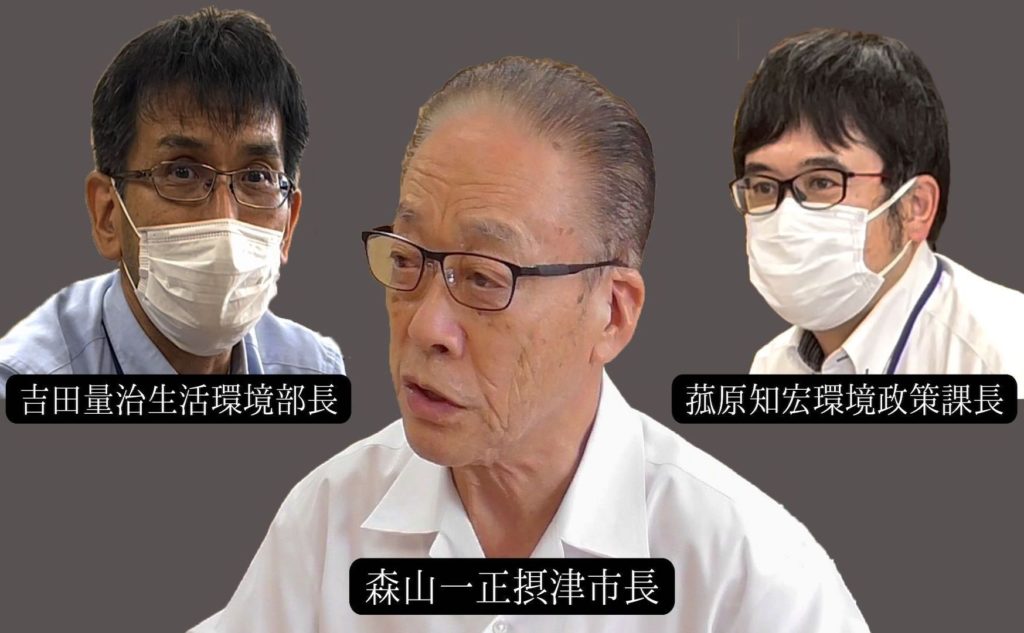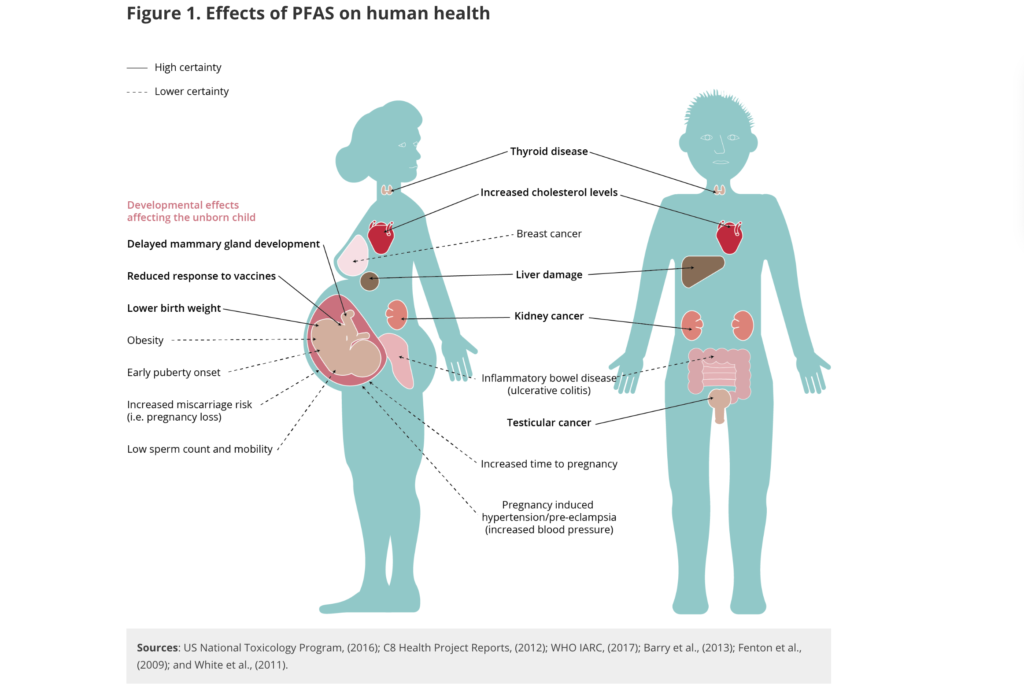90 Minutes with Settsu City Mayor [Part 1] Mayor Moriyama Does Not Request Daikin to Negotiation Compensation for Citizens, Even If Daikin Shows Willingness to Respond (26)
2023.02.07 14:33 Nanami Nakagawa
It has been more than two years since the Ministry of the Environment conducted a nationwide survey of PFOA concentrations in the water environment in 2020 and recorded the worst pollution in groundwater in Settsu City, Osaka. During this period, high concentrations of PFOA were detected whenever Settsu residents took blood tests.
What to do about pollution in Settsu? The ball is now in the hand of Mayor of Settsu City, Kazumasa Moriyama (78). This is because the officer in charge of Daikin Industries, the source of the pollution, has clearly stated that if the city of Settsu makes an offer, it will respond to discussions on compensation for the citizens. Citizens have also submitted 1,710 signatures to Moriyama requesting countermeasures.
I went to Settsu City Hall and interviewed Moriyama for 90 minutes.

[Left]Ryoji Yoshida, General Manager of Living Environment Department [Center]Kazumasa Moriyama, Mayor of Settsu City [Right]Tomohiro Komohara, Section Manager of Environmental Policy, Living Environment Department
The mayor appears with the manager in charge and the section manager
This is the second time I interviewed Mayor Moriyama. Last time was in December 2021. Moriyama said that Daikin wasn’t the only cause of pollution in the city, and showed a reluctance to pursue Daikin’s responsibility.
But then I discovered an important document, the “Environmental Conservation Agreement” concluded in 1977 between the city and Daikin.
The agreement stipulated that Daikin would compensate citizens for damage to health or property caused by Daikin. When I presented this agreement to Daikin, Toru Abe, head of the Public Relations Group, clearly stated, “If there is a request from Settsu City, I would like to start negotiations.” Yoshiyuki Hiraga, executive officer in charge of the Chemicals Division, and Satoshi Komatsu, senior manager of the Global Advocacy Planning Department who were also present, agreed on the spot.
I thought this would be a breakthrough in solving the pollution problem of PFOA. Until now, Daikin has not even acknowledged that the Daikin Yodogawa Plant in the city was the main source of pollution.
On August 29, 2022, I visited Settsu City Hall with the editor-in-chief, Makoto Watanabe, to hear Moriyama’s intentions. I was passed through to the reception room on the floor where the mayor’s office is located.
When I was waiting for Mayor Moriyama, two staff members came into the room first and said that they would join the interview. Unlike last time, when Moriyama responded to the interview by himself, this time he seemed prepared. The following two people were present.
Ryoji Yoshida, General Manager of Living Environment Department
Tomohiro Komohara, Section Manager of Environmental Policy, Living Environment Department
Moriyama came in, accompanied by his secretary. Watanabe and I, and Moriyama and Yoshida, the manager, sat facing each other. Komohara, the section chief, sat down at the desk next to him, opened his notebook, and started taking notes.
I promptly asked if he would request Daikin to negotiate based on the Environmental Protection Agreement.
Moriyama answered shortly.
“Not for now.”
Even if high concentrations of PFOA were detected from the blood of citizens
Why didn’t he approach Daikin for negotiations? Moriyama said:
“There is no national standard. When we ask a business establishment to do this or that, we have to have a solid basis.”
However, in May 2020, the Ministry of the Environment set and announced target values for PFOA in the water environment.
Temporary target value for the water environment: 50 ng/l
This target value is a value set as a health hazard if a person weighing 50 kg drinks 2 liters a day. The groundwater in Settsu City exceeds 36 times the target value, and the city is telling people not to drink the groundwater.
Yoshida, the general manager, intervened and changed the topic from talking about target values for the water environment set by the Ministry of the Environment.
“Um, before that, Article 15 of the agreement states that “pollution has occurred due to the operation of the business site, ”do you think that this requirement is met?”
Article 15 of the agreement that Yoshida referred to was a clause that stipulates compensation for residents.
In the event that pollution occurs due to the operation of the business site and damages the health and property of residents, the business operator shall compensate for the damage in good faith.
What did Article 15 not apply to? Yoshida said.
“Settsu City does not understand the situation to be recognized as pollution.”
“There is a situation about how much concentration is detected in the blood. I’m not sure how that is related to health damage…”
Yoshida argued that even if high concentrations of PFOA were detected in the blood of citizens, it was unclear if it caused health problems, so it did not fall under the category of pollution.
Settsu City, which has not conducted an investigation, ignores the results of the world’s largest study
However, the Basic Environment Law defines health hazards caused by pollution “include those that have already occurred as well as those that may occur in the future.” Even if the causal relationship between Settsu citizens’ exposure to PFOA and health damage is unknown at the moment, if there is a possibility that damage will occur in the future, it is considered pollution. When I mentioned this to Yoshida, he said,
“We don’t even know if there is a risk [of health damage in the future] at this point.”
In response, Tanasa Editor-in-Chief Makoto Watanabe explained the results of a large-scale epidemiological study published in 2012 by C8 Science Panel, an independent scientific research council in the United States. A study of 70,000 people living near a DuPont PFOA plant proved a causal relationship between PFOA exposure and health problems.
Yoshida objected.
“At the moment, it’s a fact that such things are not specifically recognized in Japan.”
However, no epidemiological studies on PFOA exposure and health hazards have been conducted in Japan, including among residents of Settsu. It is obvious that the damage is unknown.
It seemed to me that Yoshida was in a bad mood. He didn’t seem to want to admit it as pollution.
Mayor Moriyama was silent while Yoshida countered that it was not pollution. Before we knew it, he was wearing a mask that he had taken off for the shoot. Watanabe said, “Mayor, is it okay? He (manager Yoshida) is saying such irrelevant things,” but he didn’t react.

Definition of pollution: health hazards include those that have already occurred as well as those that may occur in the future. = From the Ministry of Internal Affairs and Communications website (red line is added by Tansa)
Manager laughing
Even after that, Yoshida did not acknowledge the possibility of health damage and instead asked questions.
“Is there a risk (of future health hazards)?”
The health effects of PFOA are universally recognized. Due to its danger, it is stipulated in the international treaty “Stockholm Convention,” which Japan has ratified, that it should be abolished. The decision to ban the manufacture and import of PFOA in Japan in 2021 was based on the Stockholm Convention.
I asked Yoshida if he knew about the Stockholm Convention. Yoshida replied that he knew.
After receiving Yoshida’s answer, right after Watanabe asked again whether he still denied the possibility of health damage.
Perhaps at a loss for an answer, Yoshida started laughing.
When Watanabe said, “Don’t laugh,” I said, “What’s so funny? There are people who have suffered damage,” he replied, “I’m not laughing.”

Health effects of PFAS including PFOA = From the website of the European Environment Agency
The mayor’s misidentification “The government does pollution certification”
What about Mayor Moriyama then? I wondered if he shared the same opinion as Yoshida, the manager. Moriyama replied:
“We do not have the authority to conduct investigations and guidance regarding pollution. Only prefectures and the government can certify pollution.”
But there was a big mistake here. There are things the city can do based on city ordinances and agreements with Daikin, but there is no institution that certifies pollution in the first place. Based on the definition of pollution stipulated in the law, the parties concerned are supposed to decide compensation and recovery of the damage through courts and consultations.
We told Moriyama about that point. However, Moriyama just kept repeating that the government was responsible for recognizing pollution. It didn’t seem that Settsu City was taking action on behalf of the citizens.
Why was Moriyama so stubbornly refusing to take action? The real intention was exposed in the second half of the interview. I will report in the next article.
To be continued.
(Originally published in Japanese on September 21, 2022. Translation by Mana Shibata.)
Polluted with PFOA: All articles
 Newsletter signup
Newsletter signup